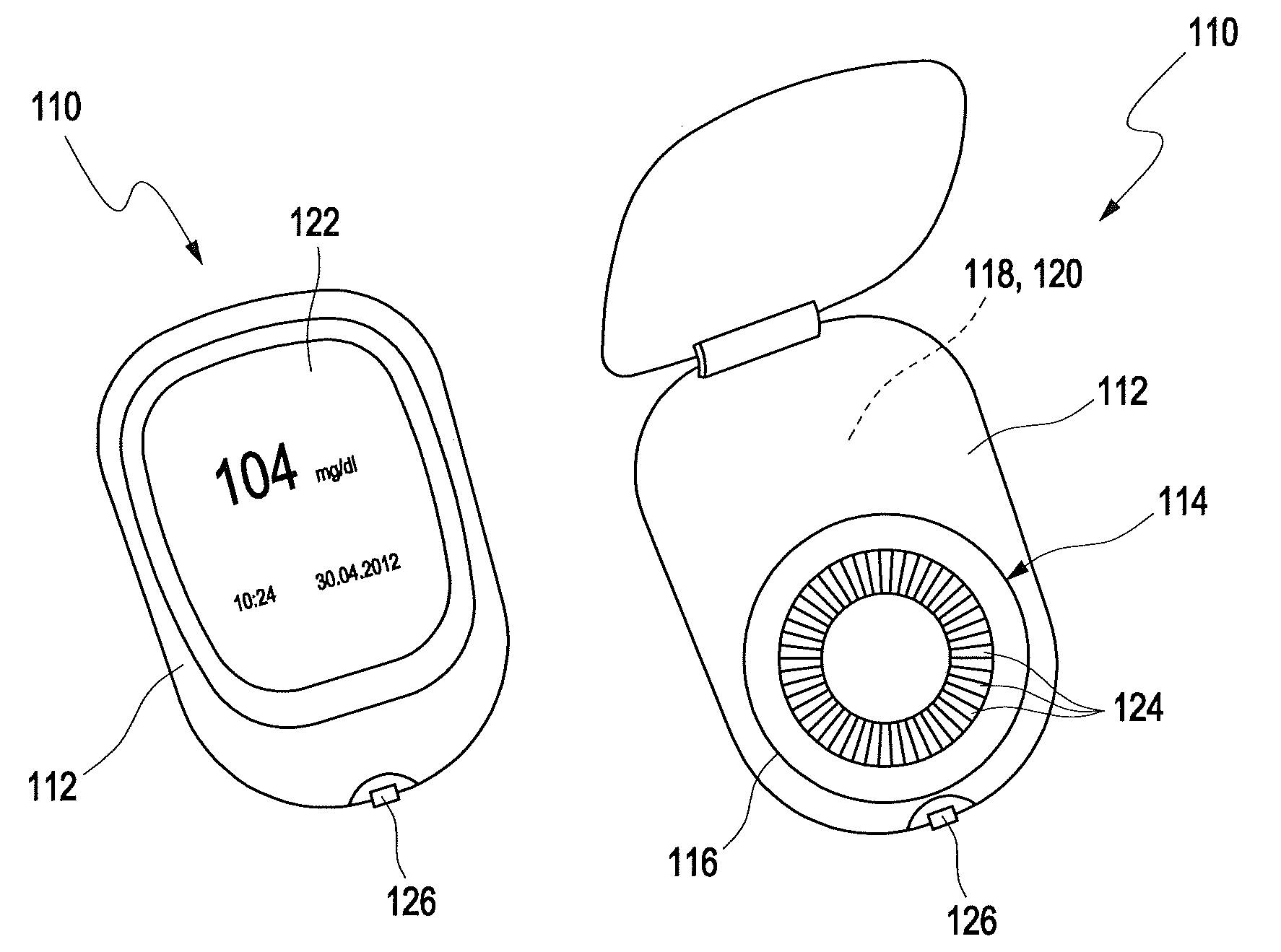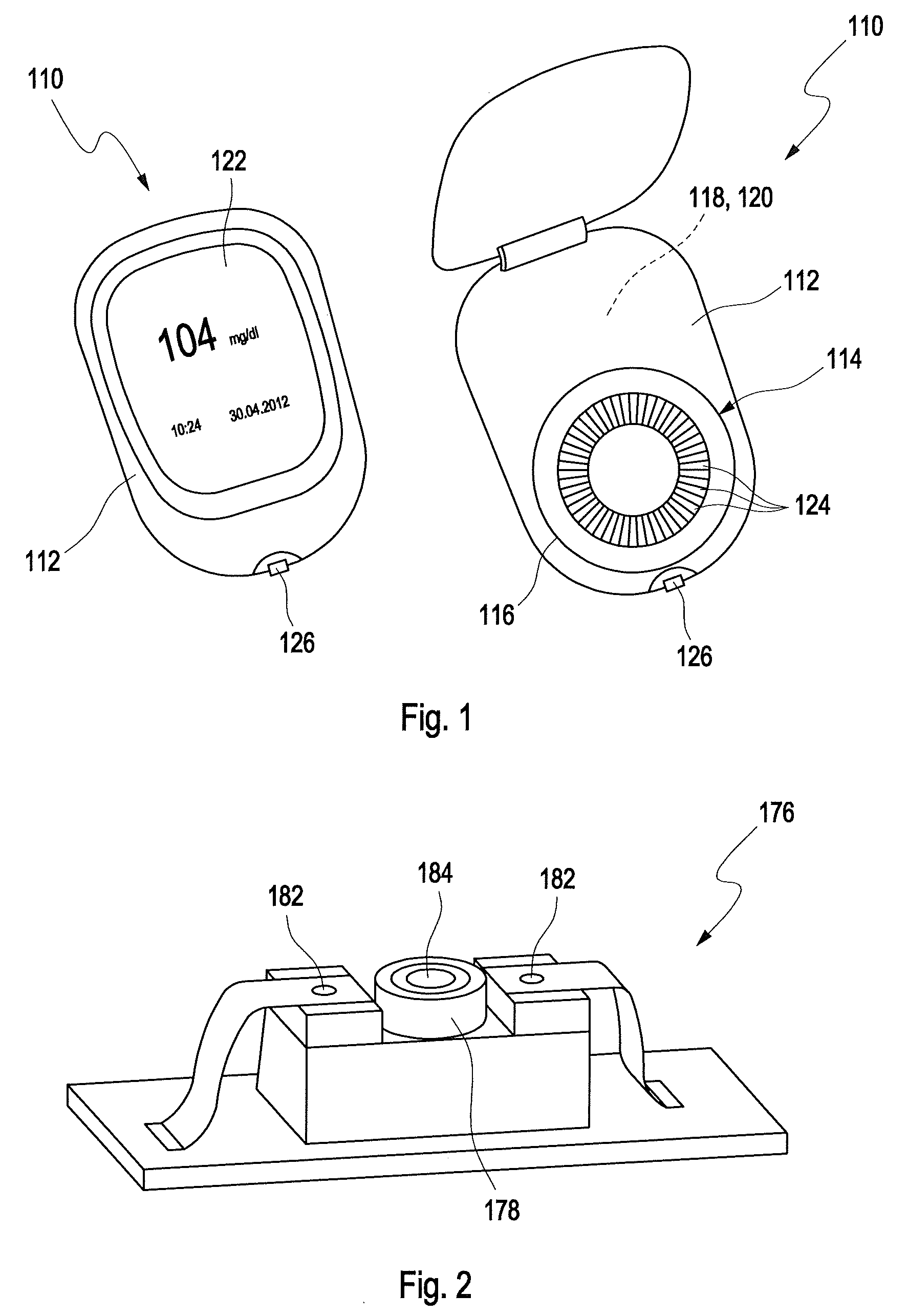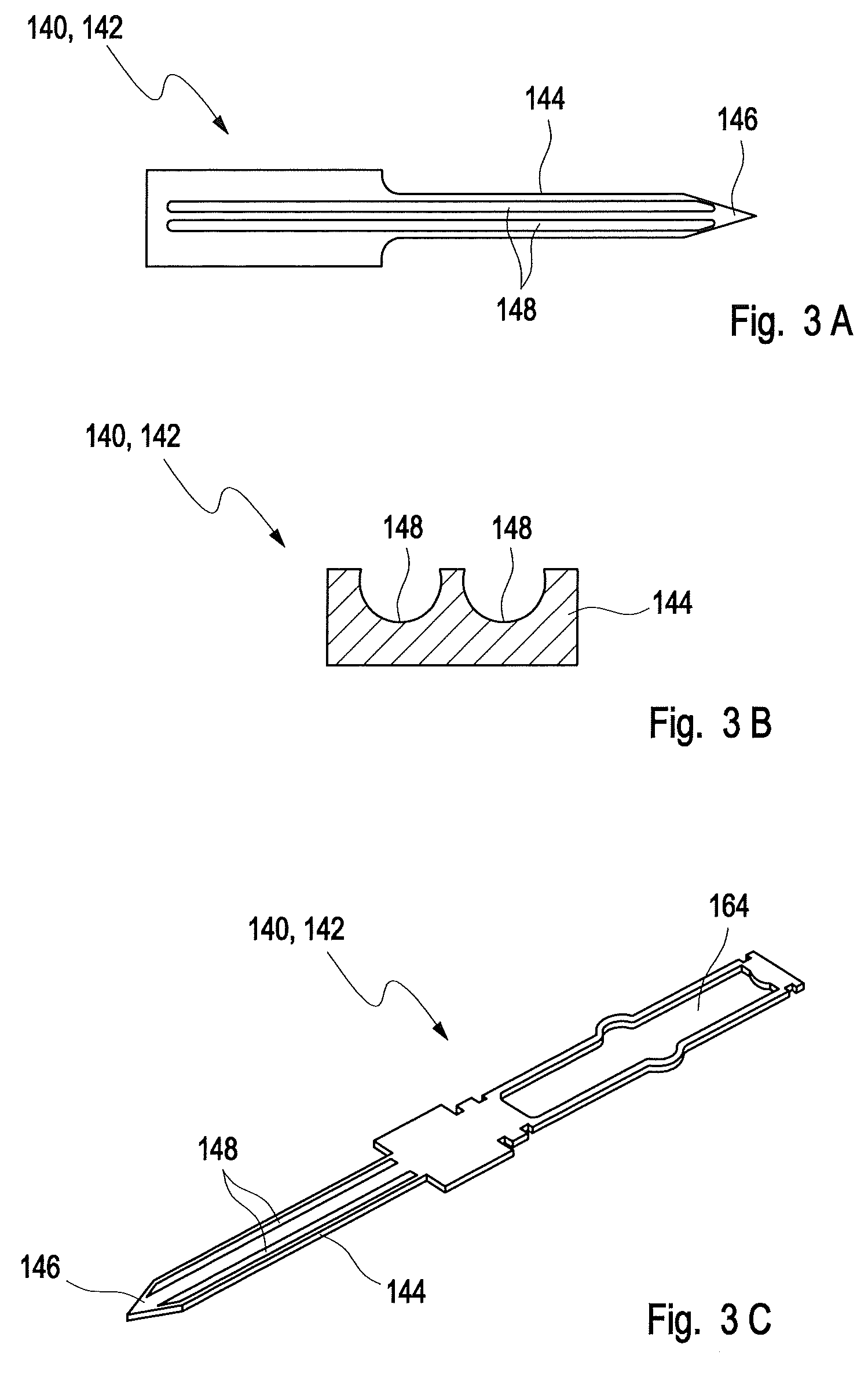Method and device for detecting an analyte in a body fluid
a body fluid and analyte technology, applied in the field of body fluid detection methods and devices, can solve the problems of increasing the effort to further reduce the sample volume to be applied to the test field, unable to detect blank values, and unable to achieve the effect of detecting blank values
- Summary
- Abstract
- Description
- Claims
- Application Information
AI Technical Summary
Benefits of technology
Problems solved by technology
Method used
Image
Examples
Embodiment Construction
[0215]For the purposes of describing and defining the present invention it is noted that terms like “preferably”, “commonly”, and “typically” are not utilized herein to limit the scope of the claimed invention or to imply that certain features are critical, essential, or even important to the structure or function of the claimed invention. Rather, these terms are merely intended to highlight alternative or additional features that may or may not be utilized in a particular embodiment of the present invention.
[0216]In FIG. 1, a potential test system 110 for detecting at least one analyte in at least one sample of a body fluid is disclosed in two different states, wherein the test system 110 on the left hand side in FIG. 1 is shown in a closed state, and on the right hand side in an opened state. The test system 110 comprises a device 112 for detecting at least one analyte in at least one sample of a body fluid and, as an example, a magazine 114 received in a receptacle 116 of the dev...
PUM
| Property | Measurement | Unit |
|---|---|---|
| volumes | aaaaa | aaaaa |
| volumes | aaaaa | aaaaa |
| time | aaaaa | aaaaa |
Abstract
Description
Claims
Application Information
 Login to View More
Login to View More - R&D
- Intellectual Property
- Life Sciences
- Materials
- Tech Scout
- Unparalleled Data Quality
- Higher Quality Content
- 60% Fewer Hallucinations
Browse by: Latest US Patents, China's latest patents, Technical Efficacy Thesaurus, Application Domain, Technology Topic, Popular Technical Reports.
© 2025 PatSnap. All rights reserved.Legal|Privacy policy|Modern Slavery Act Transparency Statement|Sitemap|About US| Contact US: help@patsnap.com



